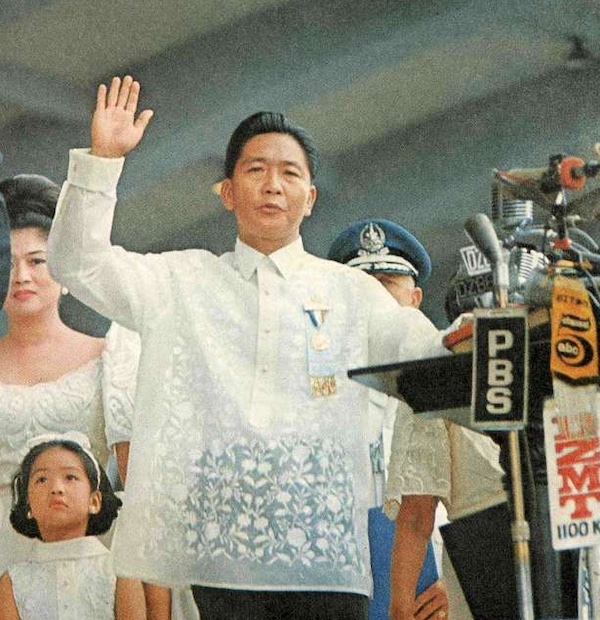
Last Monday, I stumbled across a social media post that led to a very rare and relevant (at least to me) find: a limited-run book published in 1971, written and autographed by Ferdinand E. Marcos.
On Monday, September 19th at about 3:30 p.m., my friend Tom Leber, a local realtor and manager of several properties, posted this message on Facebook:
Another “what tenants leave behind” story…. One of our commercial leaseholds, which used to be a book store, just moved out and emptied the store into the dumpster in the back. If anyone is interested in dumpster diving for a library of brand new books.
The address was pretty close to our house. A minute later, I was in my car, and ten minutes later, I was facing this beast:
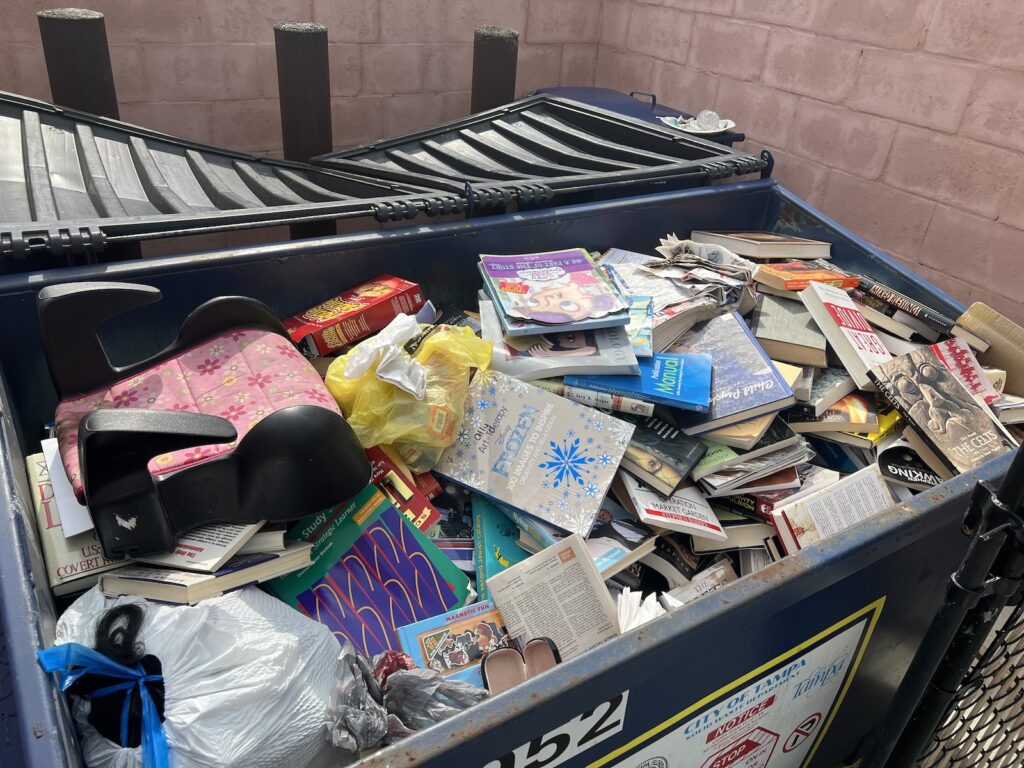
I ended up taking dozens of books on all sorts of topics, but there’s one that’s of particular interest to me: Today’s Revolution: Democracy, written by the former head kleptocrat of the country of my birth (and father of the present head kleptocrat), Ferdinand E. Marcos.
Here’s a photo of the book’s cover, taken against my laptop cover for contrast:
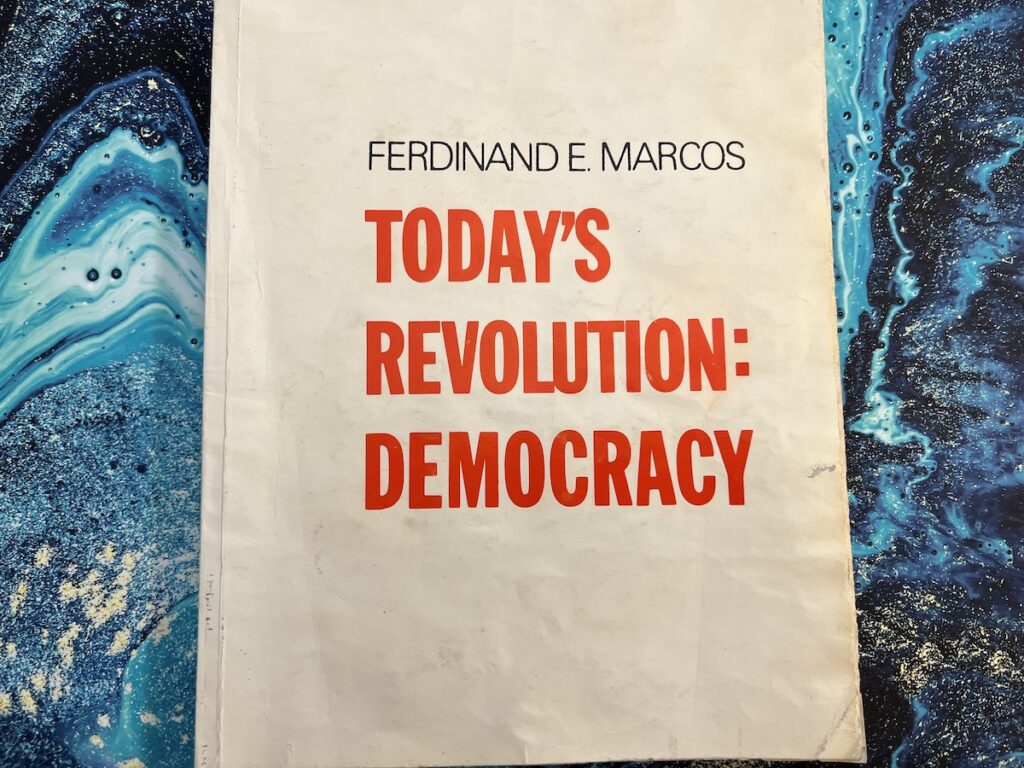
Here’s the first page:
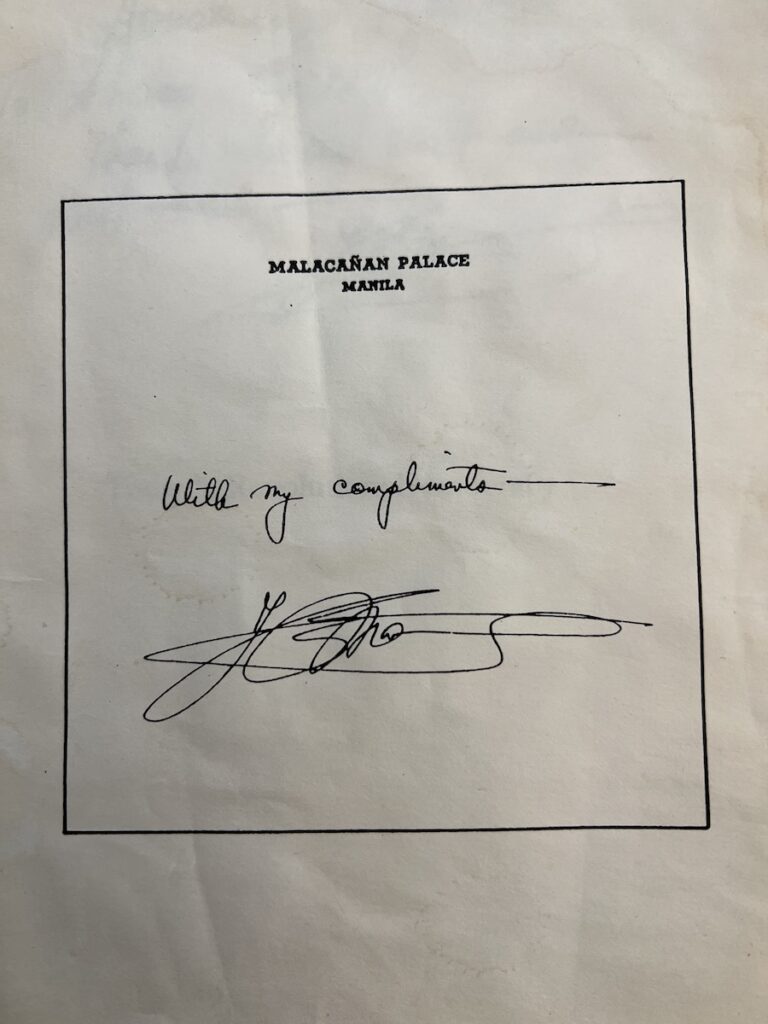
Malacañan Palace is the residence and office of the Philippine president — basically, it’s the Filipino equivalent of the White House in the U.S..
It’s hard to tell if the “With my compliments” autograph is a printed image or an actual by-hand signature, but the next page definitely has a real autograph that looks like it was made with a Sharpie:
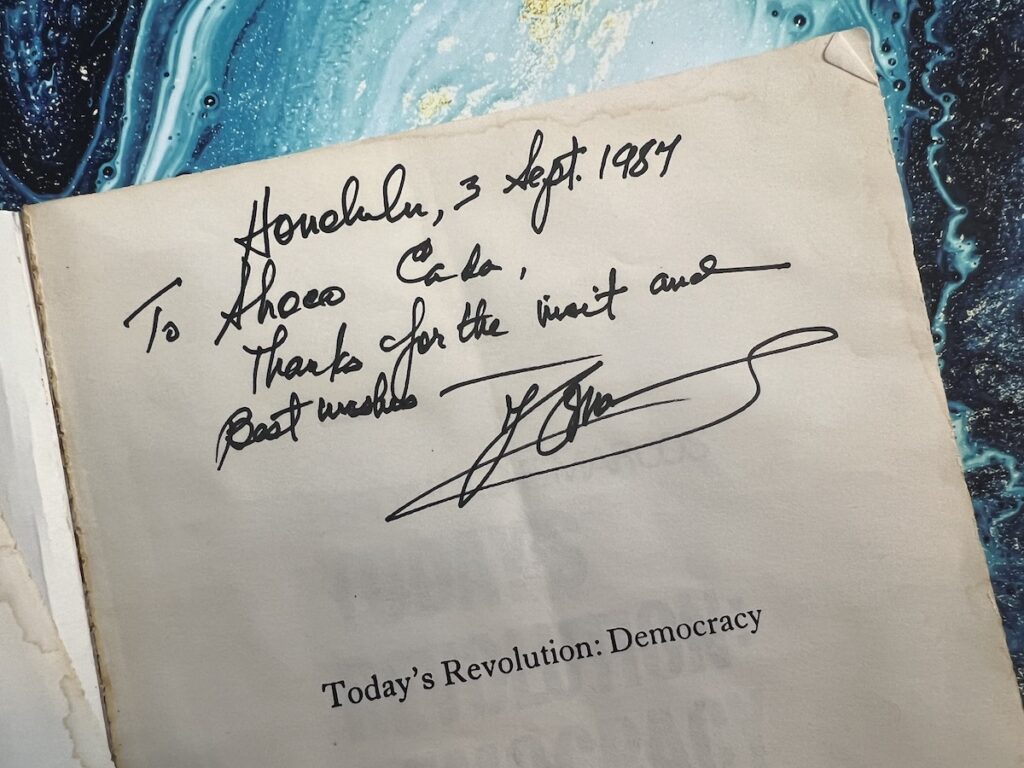
The dateline of Honolulu, 3 Sept. 1987 fits — Marcos had fled the Philippines the year earlier after the snap election he declared in 1986 turned into a snap revolution. Luckily for him, the U.S. had no qualms about safely spiriting a friendly dictator away in an Air Force C-130 to Hawaii via Guam, along with the following luggage:
- 22 crates of cash valued at $717 million
- 300 crates of assorted jewelry with undetermined value
- $4 million worth of unset precious gems contained in Pampers diaper boxes
- 65 Seiko and Cartier watches
- A 12 by 4 ft box crammed full of real pearls
- A 3 ft solid gold statue covered in diamonds and other precious stones
- $200,000 in gold bullion
- $1 million in Philippine pesos
- $124 million in deposit slips to banks in the US, Switzerland, and the Cayman Islands
(And I thought I “travelled heavy” by flying with my accordion!)
I immediately pulled out my phone and Googled for images of Marcos’ signature, and the signatures in the book seem to match the ones online, right down to the big swoosh after the “s”:

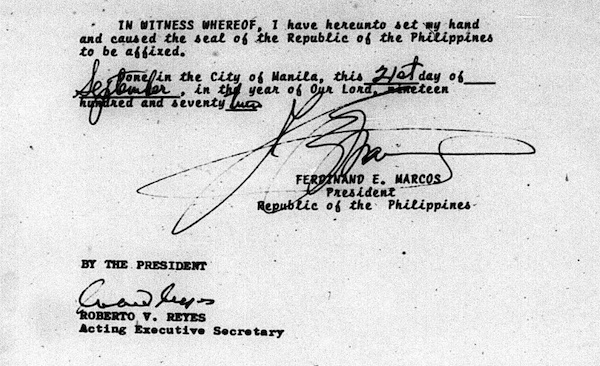

It appears that a limited run of these books were printed, if this inscription after the title page is to be believed:
![Page after the title page, which reads “This is a private edition of 1,000 copies, of which this is no. [blank]. Copyright 1971 by Ferdinand E. Marcos / All rights reserved”](https://www.joeydevilla.com/wp-content/uploads/2022/09/private-edition.jpg)
In a clash with its purported thesis, Today’s Revolution: Democracy starts with a decidely un-democratic addendum in which Marcos explains that he had to suspend habeas corpus (simple definition: the right to be seen by a judge or court before being imprisoned) as a result of the bomb at a political rally of the Philippines’ Liberal Party at Manila’s Plaza Miranda on August 21, 1971, where 9 people died (one of whom was a 5-year-old) and nearly 100 were injured.
Nobody really knows who was responsible. Marcos and his cronies blamed radical groups like the Communist Party of the Philippines and the New People’s Army, but most historians and even the CIA believe that Marcos was the one behind it. It’s believed that the bombing was carried out to be the rationale for Marcos’ later declaration of martial law in September 1972 (which got a nod from Nixon, who was told that the Philippines was under communist terror attack), which in turn set in motion my parents’ decision to emigrate to Canada.
The book itself pays a lot of lip service to social and economic democracy, liberal society, “revolution” in a sense that’s pretty close to the American Revolution, and warnings against being blinded by ideology. But throughout the book is a strong subtext where Marcos tells you who he really is: a third-world strongman with the confidence that comes with the backing of the U.S. during the era of the Cold War (the U.S. Air Force had Clark Air Base and a Navy base in Subic Bay).
How did this book find its way from Malacañang Palace to the Marcos’ high life-in-exile (in a waterfront house worth $1.5 million in 1986) in Hawaii to a dumpster in Tampa? There’s probably an interesting story there.
One reply on “I found a signed limited edition book by Ferdinand Marcos in a dumpster”
That’s seriously amazing. What a great find. Wonderful story, too.
I’m curious. A friend of mine visited the Philippines back in the early 90s. He sent me a postcard from Malacañan Palace showing rack after rack of Imelda Marcos’ shoes. I guess there wasn’t room on that C-130. Now that a Marcos is back in power, I’m wondering if those shoes are still on display. It was a pretty weird postcard, but her shoe collection was famous.